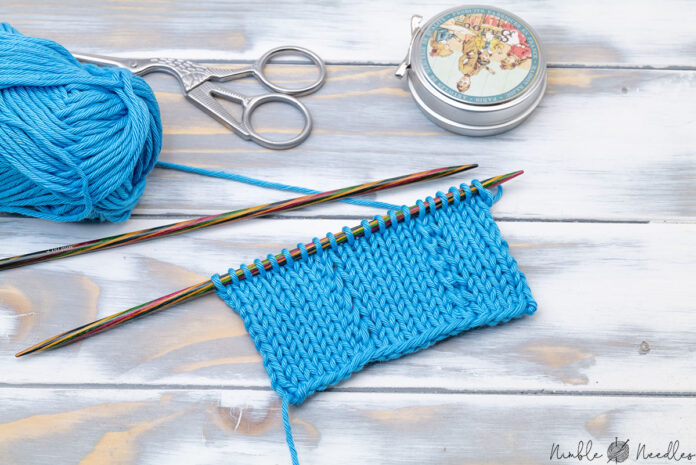A step-by-step tutorial on the K1tog LL and K1tog RL pseudo-decreases – sensible methods to shut gaps, keep away from joggs, and so forth
I really like experimenting with my knitting and attempting to resolve new methods to unravel outdated factors. One among mine has frequently been discovering a lower that ends within the similar affect like a KLL or KRL. And, lo and behold, with the K1tog LL I discovered only a bit workaround.


Now, I need to make this crystal clear that I made these two “decreases” up myself. I couldn’t uncover them in any knitting e e-book nonetheless haven’t any clue if I used to be the primary one to ever take into consideration them. So, I make no declare correct proper right here. I merely need to present you these methods and why and the best way by which I reap the advantages of them and improve your knowledge earlier what you uncover in most tutorials on among the finest methods to lower knitting.


Change: I up to date the directions in September 2021 due to I discovered a barely elevated option to knit these stitches for even neater outcomes.
Energetic Time
1 minute
Full Time
1 minute
Notes
Instead of knitting the 2 loops collectively by way of the as soon as extra loop, you’ll too merely knit a typical k2tog.


This will likely often create a rather a lot a lot much less condensed sew which will likely be a bit additional in accordance with the feel and appear of stockinette sew. Most individuals will choose to knit this sew that option to create jogless stripes, and so forth. although it is a bit looser.


Directions for k1tog LL
And likewise you knit one collectively left loop in a really comparable methodology. The stitches behave in a really comparable methodology and it boils all the best way by which proper right down to the place in your materials you need to make use of them – very like completely completely different left- and right-leaning knitting decreases. And k1tog LL could be the right-slanting model.
Step 1: Slip the sew you need to knit collectively knitwise.


Step 2: Resolve up the left loop of the sew one row beneath the one you merely slipped and slip the sew you slipped as soon as extra to the left needle.


Step 3: Knit the 2 stitches collectively.


You may also slip the sew purlwise (step 1) as a substitute. The outcome will likely be a significantly free column of knit stitches, the place, in distinction to while you slip a sew (inside the sooner row), the float is built-in into the sew.


Use circumstances for these two decreases
To start with, I determine them decreases due to they’re knit within the similar methodology nonetheless they are not reducing your sew rely. They solely carry a singular constructing to the material.
#1 Creating one of the best slopped neckline with out a niche


Most individuals who knit sweaters bottom-up will bind off all through the neckline after which decide stitches up. Whereas this might reinforce the collar, it usually will look rather a lot a lot much less neat than a top-down raglan sweater kind of neck or the yokes so trendy in Truthful Isle knitting.
Nonetheless correct proper right here’s one completely different methodology: You may slip stitches to cable/sew holder. Nonetheless there’s a drawback: Usually you’d attempt to create a pleasant slope by slipping the primary sew after the stitches you slipped to the cable. Nonetheless everytime you knit all by, this might nonetheless depart little gaps.
When you K1tog LL after the opening (or k1tog appropriate loop before the opening on the suitable facet), this gained’t create an eyelet and an awesome neckline.
#2 Cinching the material
One completely different drawback you is perhaps going by means of has to do with the best way by which by which KLL and KRL “cinch” the material due to they steal a little bit bit little little bit of yarn from the row beneath. When you’ve got been to knit a scarf with these will improve, this is able to flip into an issue.
Nonetheless this “draw back” may be utilized for shaping toys and completely completely different knitwear. Nonetheless for those who occur to need to cinch one issue spherical symmetrical on the extreme and the underside, you could be going by means of an issue: There is not any corresponding lower that principally steals yarn from the row beneath. You may slip stitches, nonetheless that furthermore poses an issue.


Do that swatch. I slipped stitches inside the center to shorten the material in that place. Nonetheless because you could be principally creating floats, it creates an elevated kind of line that typically shouldn’t be what you need.


Correct proper right here’s an image of the underside of my pumpkin sample. I did a K1tog RL/LL and likelihood is you will clearly see how this helps to carry the segments of the pumpkin a bit to the doorway (or significantly the create the indentation).
Apart from that, I’m not actually utilizing these stitches for one thing. The use circumstances are considerably restricted and it’s actually not the very very very first thing a newbie must be taught. Nonetheless, I suppose it’s kind of attention-grabbing to know, appropriate?
Studying tip: The ultimate phrase doc of knitting decreases – centered, right-, and left-leaning alternate decisions for each mission.
That’s all I can inform you about k1tog LL and k1tog RL. Be at liberty to ask your questions beneath!



